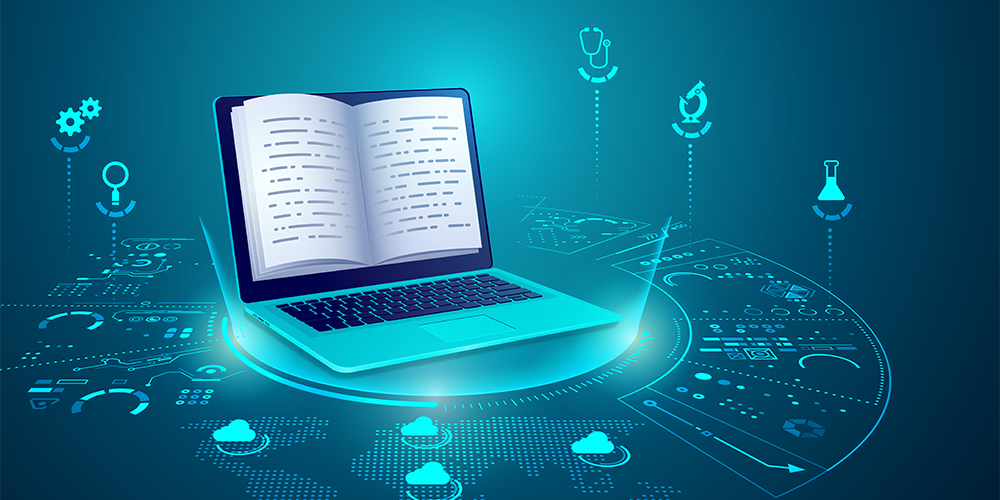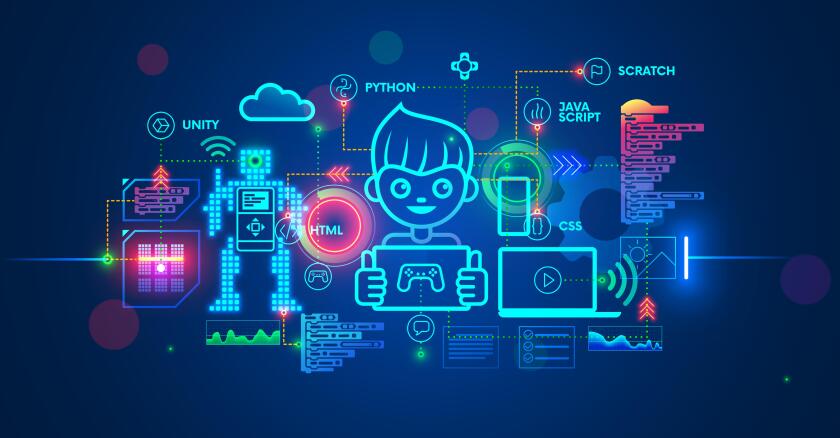Take Advantage Of Advanced AI Tools to Boost Productivity and Performance
Take Advantage Of Advanced AI Tools to Boost Productivity and Performance
Blog Article
Ingenious Strategies for Enhancing Innovation Education and learning in Today's Knowing Environments
The advancing landscape of modern technology education necessitates a reevaluation of traditional pedagogical strategies to better furnish trainees for the complexities of the contemporary globe. Ingenious strategies, such as hands-on discovering experiences and collaborative project-based campaigns, play an important function in connecting theoretical concepts with sensible applications. Furthermore, the assimilation of on the internet sources and gamification can boost engagement and inspiration among learners. As we explore these techniques, it becomes important to think about just how tailored learning can even more improve the academic experience and promote a much deeper link in between pupils and innovation. What might this imply for the future of education and learning?
Hands-On Knowing Experiences
Hands-on understanding experiences function as a cornerstone in innovation education, properly linking the void in between academic expertise and functional application. These experiential tasks enable pupils to involve directly with tools, software application, and technology, cultivating a much deeper understanding of concepts that are often abstract in conventional classroom setups.
By incorporating hands-on understanding, educators can help with a setting where trainees can experiment, introduce, and troubleshoot. This approach not just cultivates technical skills yet also improves problem-solving abilities, as students are urged to challenge real-world difficulties. Hands-on experiences commonly lead to increased student inspiration and engagement, as learners see the instant significance of their studies to useful situations.
Additionally, such experiences can take different kinds, consisting of laboratory experiments, simulations, and interactive jobs, all of which satisfy various knowing designs. The combination of hands-on knowing in technology education and learning also promotes retention of info, as students are a lot more most likely to keep in mind principles they have actually actively functioned with rather than passively observed. In general, hands-on experiences are necessary in preparing pupils for the complexities of the modern-day technical landscape, equipping them with the abilities and confidence required to be successful in their future occupations.
Collective Project-Based Understanding
Collaborative project-based knowing equips trainees to interact in groups to deal with complicated, real-world troubles, cultivating essential skills for the modern labor force. This method motivates active engagement, essential thinking, and creative thinking, as students negotiate roles, share responsibilities, and collectively design solutions. By submersing themselves in jobs that mirror genuine challenges, students establish a much deeper understanding of the subject while sharpening their capability to interact and team up successfully.
In technology education, collective project-based learning can manifest via interdisciplinary tasks that integrate components of style, engineering, and coding. Students may team up to develop a mobile application or style a prototype that attends to a societal concern, requiring them to integrate various technological principles and tools. This experiential discovering not only boosts technical proficiency yet likewise grows analytic skills and adaptability.
In addition, such joint endeavors promote a feeling of area amongst pupils, fostering interpersonal relationships and a shared commitment to their project results. As they navigate the complexities of team effort, students find out to value varied viewpoints and leverage each various other's staminas, preparing them for future specialist atmospheres where collaboration is essential. Eventually, joint project-based understanding is a keystone of reliable technology education.
Assimilation of Online Resources

The assimilation of on the internet sources promotes accessibility to updated information and sector criteria, which is important in a rapidly evolving technical landscape. By leveraging platforms such as MOOCs (Massive Open Online Courses) and specialized instructional websites, instructors can supplement traditional curricula with real-world applications, making it possible for pupils to engage with existing patterns and methods.

Ultimately, the thoughtful integration of on the internet resources in modern technology education and learning promotes a more vibrant, appealing, and appropriate understanding experience, furnishing trainees with the abilities and expertise needed to grow in a significantly digital globe.
Gamification Strategies in Education
The unification of gamification techniques in education and learning represents a powerful strategy to better engage trainees and enhance their discovering experiences. By integrating game-like aspects such as factors, badges, and leaderboards right into the curriculum, educators can promote inspiration and promote a feeling of competitors amongst students. These methods encourage participation and persistence, particularly in subjects that might otherwise show up intimidating.
Gamification can take various forms, including interactive tests, collective tasks, and immersive simulations, which enable pupils to use their understanding in practical contexts. This interactive approach not just makes finding out pleasurable you can try these out but additionally reinforces vital principles with rep and instant responses. As trainees progress, they can track their success, promoting a development frame of mind and a sense of accomplishment.
Moreover, gamification helps with differentiated instruction by catering to varied understanding styles and speeds. Trainees are equipped to take possession of their understanding journey, permitting a more individualized academic experience. In an increasingly digital world, the usage of gamification methods can link the gap between typical education and learning and modern technological improvements, inevitably preparing trainees for future obstacles.
Personalized Discovering Approaches
Individualized learning techniques are progressively acknowledged as essential for resolving the varied needs and choices of pupils in today's academic landscape. These approaches encourage students by customizing educational experiences to private passions, strengths, and learning paces, therefore boosting involvement and retention.
In modern technology education, personalized discovering can take various forms, including adaptive knowing technologies, personalized curricula, and project-based discovering customized to trainee interests. As an example, systems that use expert system can evaluate a trainee's performance information to recommend specific resources or tasks that line up with their discovering style.
Moreover, tailored understanding encourages trainee company, enabling students to establish objectives and choose pathways that resonate with their aspirations (Make Money). This freedom cultivates a much deeper connection to the material, eventually resulting in boosted results
Educators play a crucial role in this process, using developmental evaluations to keep an eye on progress and readjust instruction appropriately. Collective devices and electronic profiles can additionally promote individualized learning, enabling trainees to review their trips and showcase their achievements.
Verdict
To conclude, improving modern technology education in modern discovering environments demands the execution of cutting-edge approaches that focus on hands-on knowing, collaborative projects, and the assimilation of online sources. Gamification techniques serve to raise interaction and inspiration, while individualized learning methods accommodate specific staminas and foster trainee agency. Collectively, these methods produce a vibrant educational experience that prepares trainees this contact form for real-world challenges and grows crucial abilities for future success in a rapidly developing technical landscape.
As we explore these techniques, Web Site it ends up being essential to consider just how customized learning can better enhance the academic experience and promote a much deeper link between students and modern technology. The assimilation of hands-on learning in modern technology education and learning likewise advertises retention of information, as pupils are more likely to remember concepts they have actively worked with rather than passively observed.The consolidation of gamification techniques in education and learning represents a powerful strategy to additionally involve trainees and improve their understanding experiences. Students are empowered to take ownership of their knowing trip, allowing for a more customized academic experience.In verdict, enhancing technology education in modern learning settings requires the execution of cutting-edge methods that focus on hands-on understanding, collective tasks, and the assimilation of online sources.
Report this page